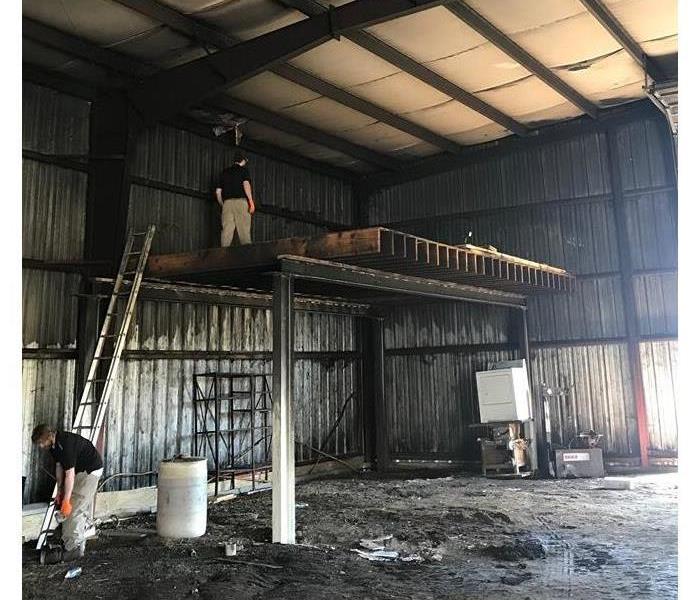Multiple Types of Soot, Oh My!
7/8/2019 (Permalink)
 Different types of soot require different cleaning methods. It is important to know and understand them before attempting to clean up after a fire.
Different types of soot require different cleaning methods. It is important to know and understand them before attempting to clean up after a fire.
Did you know there are several types of soot? It’s true, that is why it is so important to never try to clean up after a fire yourself. Each type of soot requires a different cleaning process and product. There are actually 5 different types of soot. They are:
- Wet Smoke- Wet smoke residues result from water being used to extinguish the fire from either the fire department, a sprinkler system or from smoldering fires with low heat. These residues are smeary and have a pungent smoky/musty odor. They usually require wet cleaning to be removed.
- Dry Smoke- Dry smoke residues result from a fire source that is more combustible or fast burning such as wood and burns at higher temperatures. These residues can also be caused with a furnace puff back. They are often dry, powdery and are small, non-smeary smoke particles that require a dry cleaning process BEFORE wet cleaning. They are the easiest to remove.
- Oily Smoke- Oily smoke residues result from grease fires, burned plastic and fuel oil furnace backups. Also, this type of soot can be from heavy nicotine build up before the fire damage even occurred. This type of soot is smeary, and usually requires additional cleaning steps to remove. Oily soot is resistant to water based cleaning.
- Protein Soot- This type of soot results from burned meat or eggs, such as cooking a chicken on the stove overnight. The residue is virtually invisible and can penetrate into all surfaces such as paints, floor coverings, wood and plastics. This type of soot has an extremely pungent odor, and it is the most difficult odor to eliminate.
- Other Types of Residues- Other types of residues that need to be cleaned properly include tear gas, fingerprint powder, pepper spray and fire extinguisher residues.
As you can see, each one of these types of soot requires a different cleaning method and product. So let SERVPRO of West Seneca/Lancaster take the guessing work out of cleaning after a fire. Our trained and professional technicians have the tools and knowledge to decipher which type of soot is present, and which cleaning method is needed to make it, “Like it never even happened."




 24/7 Emergency Service
24/7 Emergency Service